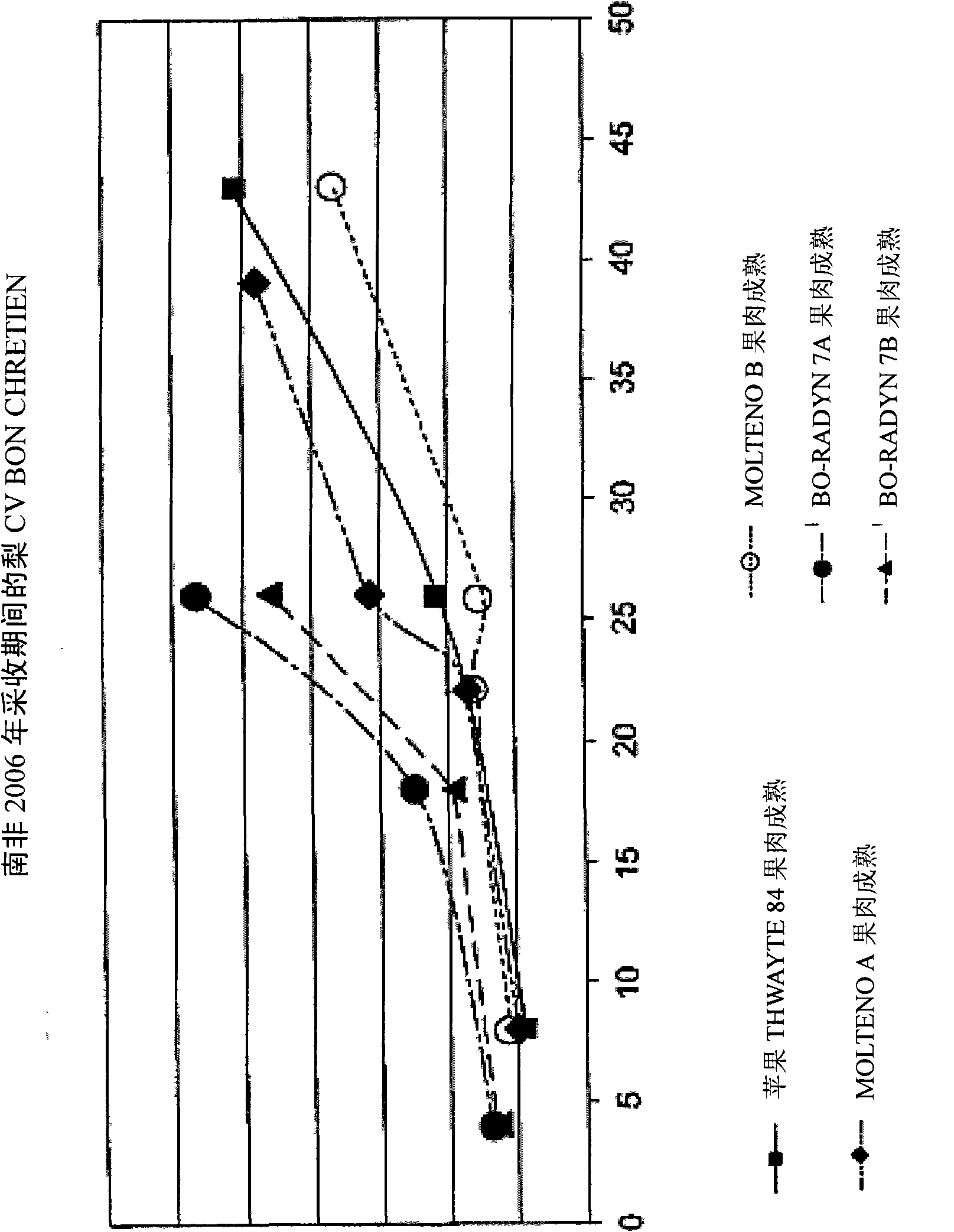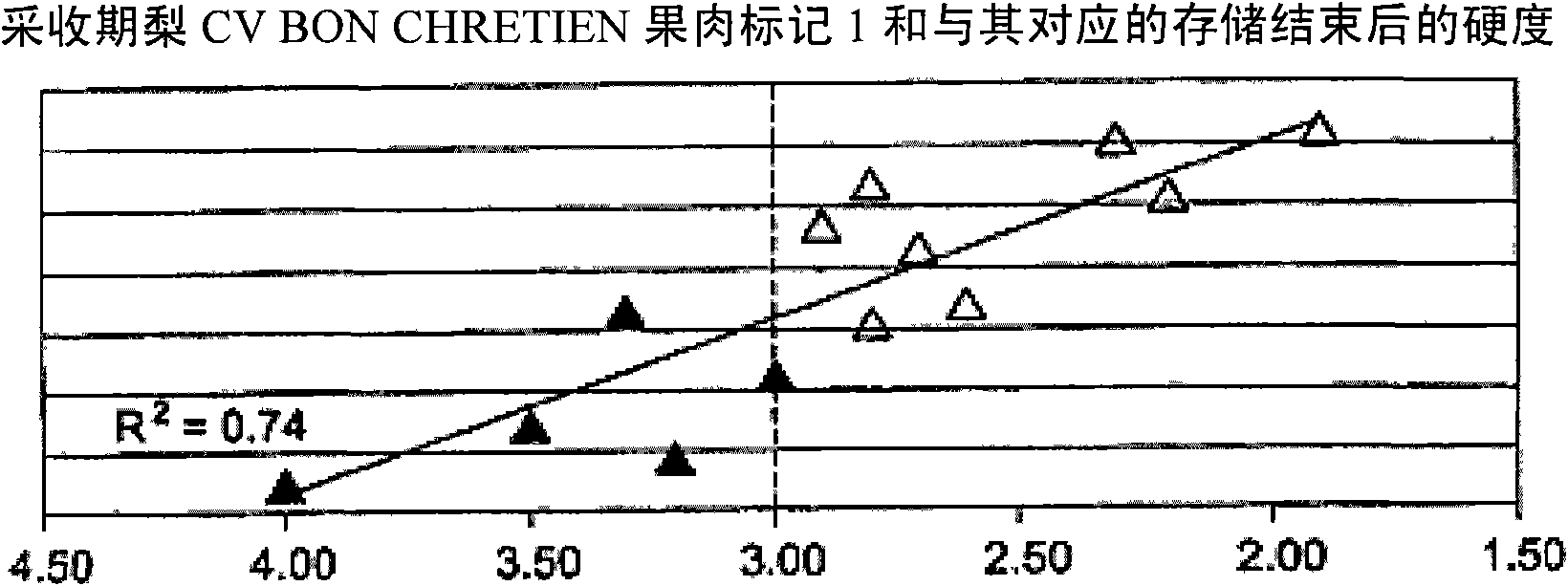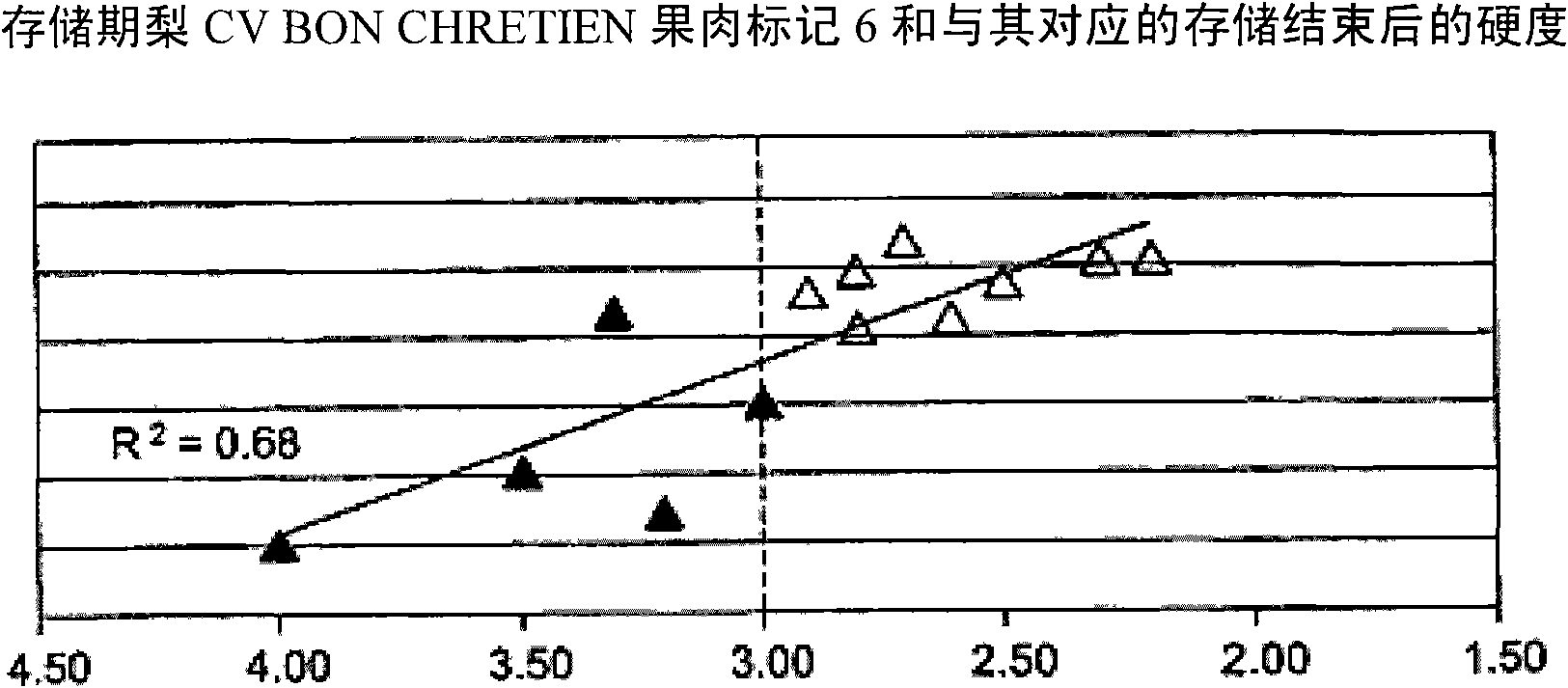Determination of quality features in agricultural and horticultural crops
A horticultural product, a specific technology, applied in the field of determining the quality characteristics of crops and horticultural crops, which can solve the problem of predicting the optimal harvest window without the application of molecular biology technology
- Summary
- Abstract
- Description
- Claims
- Application Information
AI Technical Summary
Problems solved by technology
Method used
Image
Examples
Embodiment 1
[0069] To determine the correlation between gene expression and fruit ripening in a large number of apple and pear cultivars.
[0070] Data were collected for two pear cultivars, Bon Chretien and Forelle, and two apple cultivars, Golden Delicious and Granny Smith, in separate orchards. , the 4 cultivars were harvested in South Africa according to South African conditions (harvesting, short-term storage, conditional delivery to eg European markets). After harvest (within 48 hours), the values of the different markers were determined in the pulp. For this purpose, mRNA was isolated from mixed fruit samples by the CTAB method (Plant Molecular Biology Reporter Vol. 11(2), 1993, pp. 113-116). Different markers were identified by expression profiling techniques described previously and confirmed by RT-PCR. All samples were tested using the primers designed below:
[0071] forward primer reverse primer
[0072] PG GCCCTAATACGGACGGAATTC AATACAGTCATCACCTGTTCCTATAACC
[...
Embodiment 2
[0099] The best time to lift tulips by air was determined by correlation of gene expression around harvest time with flower quality after harvest.
[0100] Three tulip varieties, cultivar 'Apeldoorn', cultivar 'Leen vande Mark' and cultivar 'Prominence' were sampled at the same growing point each time over four years. Sampling was performed at various times in the season, at 2-week intervals 6-7 weeks before the scheduled airlift date, at least 1 week before the confirmed airlift date, at the time of airlift, and 1 week thereafter. Each sampling of the growing point was done in the morning and the sampling treatment was done during the rest of the day. From the outermost bulb piece, take a size of 1cm 2 A piece of tissue was immediately set in liquid nitrogen. Then, in this tissue, the gene expression of a substantial number of genes for the 3 markers identified to be related to the time of harvest was determined in all standard seasons and in each variety.
[0101] To dete...
Embodiment 3
[0121] Determination of the relationship between rose flower quality and gene expression
[0122] Gene expression data were used to estimate vase life of roses. In fact, some roses last only 5 days in a consumer's vase while others (of the same variety) sometimes last as many as 10 days. This is often due to the fact that they are harvested immature in order to compromise on quality.
[0123] The survey found a good correlation between the expression level of a certain gene or a certain gene and the time and quality of harvest. Using the gene expression data, the method mentioned earlier was used to conduct a correlation study with the vase life of roses. Determining the relative expression levels in petals during and after harvest provides an approximate estimate of the expected vase life of roses. The gene used for this purpose is thought to be the GDSL-motif lipase associated with a structural marker, in this case elongation factor 1α, such as Figure 12 shown. Differe...
PUM
 Login to View More
Login to View More Abstract
Description
Claims
Application Information
 Login to View More
Login to View More - R&D
- Intellectual Property
- Life Sciences
- Materials
- Tech Scout
- Unparalleled Data Quality
- Higher Quality Content
- 60% Fewer Hallucinations
Browse by: Latest US Patents, China's latest patents, Technical Efficacy Thesaurus, Application Domain, Technology Topic, Popular Technical Reports.
© 2025 PatSnap. All rights reserved.Legal|Privacy policy|Modern Slavery Act Transparency Statement|Sitemap|About US| Contact US: help@patsnap.com



